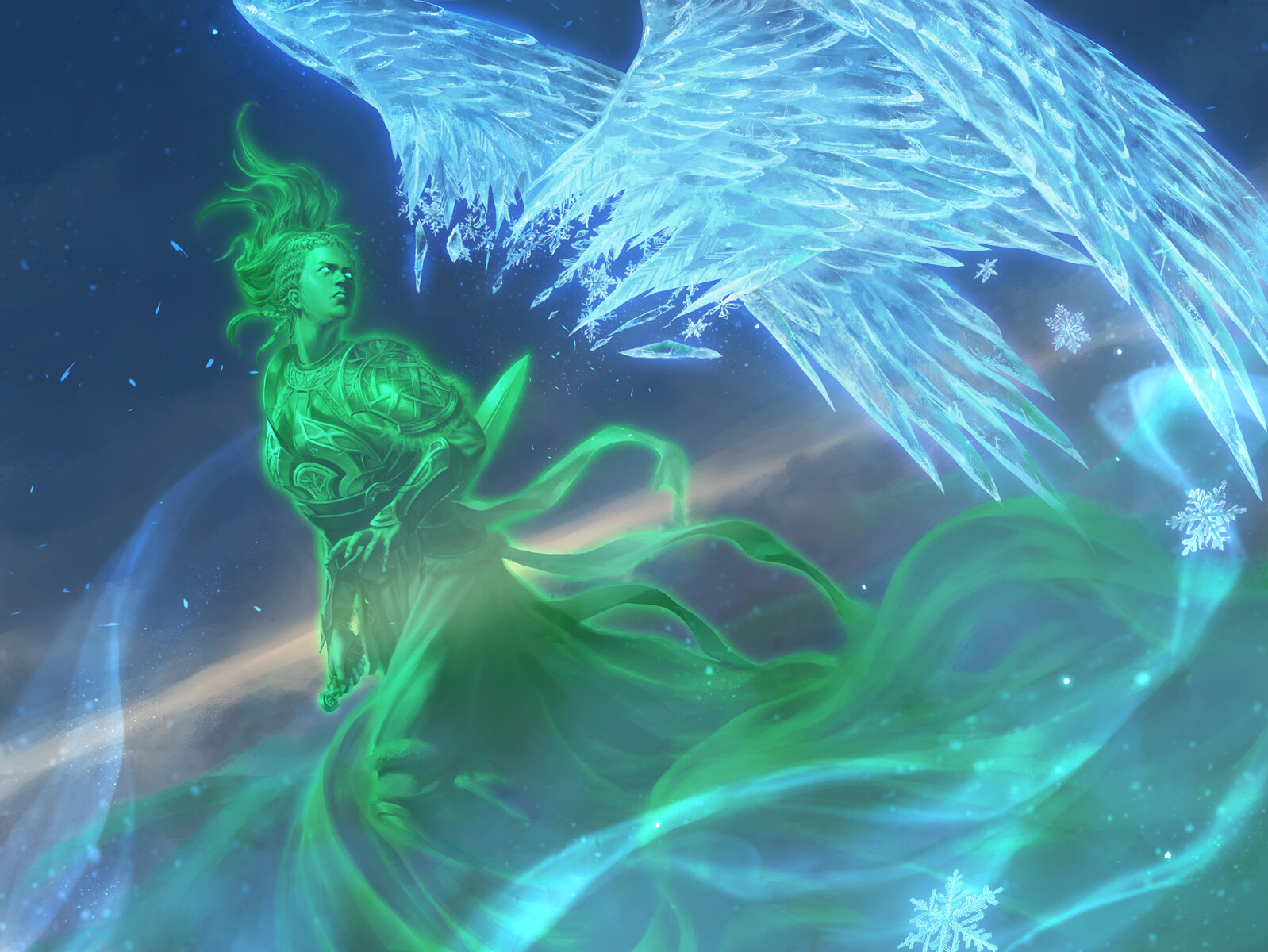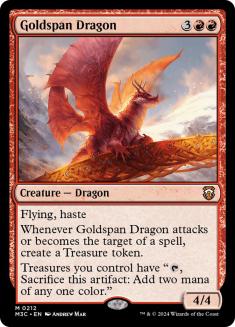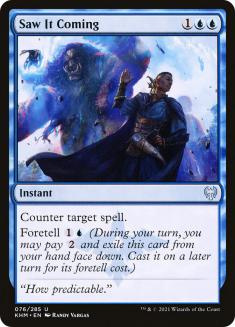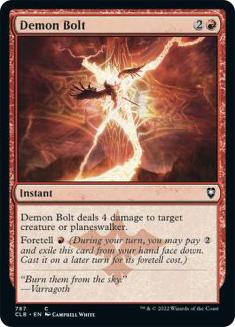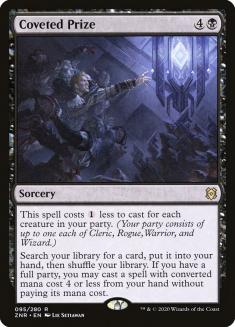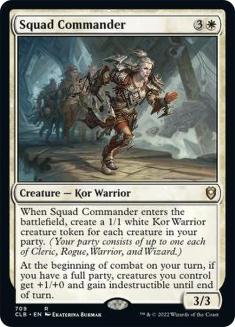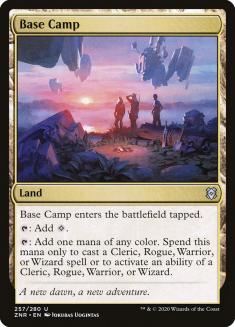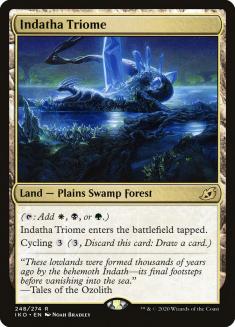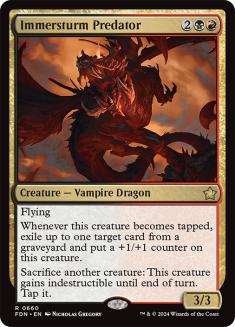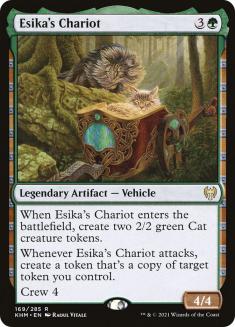Preview seasons are the absolute best time to be a content creator. There are tons of cards to evaluate and brew decks around, and excitement abounds within the entire community. It’s especially great for me because I get the opportunity to play new decks in a semi-competitive setting on VS Live! testing my ideas against one of the best players in the world.
Even though we only play a single match with each build, I end up learning a lot about how different cards work and how best to maximize them from playing a ton of different decks. This in turn informs how I build every new deck, since I gain a clearer picture of what I expect the metagame to be.
But when it comes to the show, it’s hard to go back to the same archetype since there are so many new cards and decks to explore. Sometimes I notice a major error in deckbuilding, like not including an answer to an important threat, and other times a perfect card for the deck is previewed after I’ve played the deck. But even if I know I can improve the deck significantly, I have to move on.
So today I’m going to revisit some decks I played on VS Live! during the Kaldheim preview season, tell you why I think they are promising, and show you my updated list for each archetype now that we know the entire set.
Goldspan Dragon Is the Red Teferi, Hero of Dominaria
Creatures (8)
Lands (24)
Spells (28)

This Izzet Control❄ deck came early in preview season, and was mainly my way of playing Behold the Multiverse. I’m high on the card because the foretell mechanic lets a control deck refuel without taking your shields completely down. Instead of having to tap out to reload on Turn 4, you can foretell it and hold up a piece of two-mana interaction, cast it on Turn 5 alongside a three-mana spell, and cleanly maintain parity the entire way up the curve.
Bonecrusher Giant and Brazen Borrower were easy additions just because they’re among the best interactive spells at their cost, but their inclusion gives the deck a more aggressive bent. It’s not pure control, even if it plays out that way.
The problem was that the trio of Bonecrusher Giant, Brazen Borrower, and Shark Typhoon didn’t give the deck enough pressure to close games. And without a game-ending top-end spell you were vulnerable to flooding, as you would run out of answers before your creatures could end the game.
After playing the card in other shells, it was clear to me that Goldspan Dragon was the answer to this problem. It’s a great finisher that can also help answer planeswalkers in a color combination that doesn’t have a clean, reliable answer to them. Normally, tapping out for a five-mana Dragon would be too awkward for a counterspell-heavy deck, but the Dragon’s ability ensures that you will have two mana to work with on your opponent’s turn, so as long as you supplement it with plenty of two-mana interaction you should be able to come out ahead.
We’ve seen this dynamic before with Nissa, Who Shakes the World and Teferi, Hero of Dominaria, and those cards defined the format during much of their time in Standard. For that reason I have Goldspan Dragon on my short list for best card in the set. Refocusing the deck around Goldspan Dragon led me to the following list:
Creatures (12)
Lands (24)
Spells (24)

Foretell becomes more prominent because it’s another good way to use the two mana from a Treasure token. For Saw It Coming specifically, you also have the opportunity to cast it for its foretell cost off that Treasure, guaranteeing your ability to interact with their reply. So while I generally think Neutralize is a better Cancel variant than Saw It Coming, the latter plays much better in this deck than most so it gets the nod.
I even went away from Frost Bite to include Demon Bolt as the removal spell of choice, in part because it’s more versatile — notably answering opposing Goldspan Dragons. Stomp handles the early threats nicely, Demon Bolt kills the midrange creatures, and bigger creatures are typically easy prey for Petty Theft or counterspells, though you have Shatterskull Smashing to answer ones that sneak through. Keep in mind that you can Stomp your own Goldspan Dragon on their turn to generate an extra Treasure if you need the mana for Smashing.
Lovestruck Beast is a potential problem card, since it outpaces Demon Bolt, but Bind the Monster is an efficient answer out of the sideboard that wasn’t previewed when I first built this deck. Unfortunately it leaves the body around for their The Great Henges, so you’ll have to play with that in mind. But Bind the Monster is easy to cast alongside a counterspell.
One of the best ways to be successful in the early days of a new set is to find the best shell for the most powerful individual cards, and this looks like the best Goldspan Dragon deck possible. The exact suite of counters and removal will have to constantly evolve, but as long as you prioritize two-mana spells, you’ll be in good shape.
A Lesson About Party
Last week was our show featuring viewer-submitted decklists, which is a great time for me to look at deck ideas and card pairings that I didn’t think of. One of the decks i played, which was submitted by Brennan DeCandio, was a Jund Elves deck that was also utilizing the party mechanic, since there’s a lot of overlap between the Elf tribe and the creature types Warrior, Cleric, Rogue, and Wizard.
I had noticed that overlap but had yet to take the time to look through every available Elf to see if a complete deck was there. So when Brennan showed me a list I was immediately excited. Harald, King of Skemfar and Tajuru Paragon could help dig for the missing pieces of your party and Elf synergies could bring you wins even if you never completely assemble it.
Creatures (30)
- 3 Radha, Heart of Keld
- 4 Acquisitions Expert
- 4 Tajuru Paragon
- 3 Zagras, Thief of Heartbeats
- 1 Toski, Bearer of Secrets
- 4 Elvish Warmaster
- 3 Harald, King of Skemfar
- 4 Elderfang Disciple
- 4 Jaspera Sentinel
Lands (22)
Spells (8)

Unfortunately, the deck fell flat. It wasn’t fast enough to run the other deck over, and the resilient elements weren’t enough to give it any hope in the end-game because the overwhelming emphasis on creatures needed to assemble a party reliably means you don’t have a lot of card advantage or interaction to break up your opponent’s powerful synergies.
So while the deck itself was a bust, it taught me a critical lesson about building around party: you need to be very aggressive. I now look at those decks like Winota, Joiner of Forces decks. You need to implement your gameplan as quickly as possible because building around party takes so much deck space. The end result was this:
Creatures (35)
- 3 Wildwood Tracker
- 4 Acquisitions Expert
- 4 Tajuru Paragon
- 4 Archpriest of Iona
- 4 Malakir Blood-Priest
- 4 Luminarch Aspirant
- 4 Squad Commander
- 4 Jaspera Sentinel
- 4 Usher of the Fallen
Lands (21)
Spells (4)

This list isn’t messing around. There are only eight cards with a converted mana cost over two, and the three copies of Coveted Prize can end up costing significantly less. The single copy of Binding the Old Gods lets your Coveted Prize act as a removal spell if necessary, and the Squad Commanders are your main finisher. Importantly, since Commander costs four, it can be cast off Coveted Prize when you have a full party, where the Jund Elf deck utilized the converted-mana-cost-six Zagras, Thief of Heartbeats as its curve-topper.
In addition to the low curve, this deck maxes out on party synergies, with Archpriest of Iona, Acquisitions Expert, and Malakir Blood-Priest augmenting Coveted Prize and Squad Commander. If you’re going to have a linear strategy, you might as well go all-in and get the most payoff possible.
So the important additions from Kaldheim aren’t particularly flashy, but they are important because they are both one-drops, filling out the deck’s curve in the most important spot. And while Usher of the Fallen is the flashier card in a vacuum, for a deck that wants to get on the battlefield as quickly as possible, the mana acceleration from Jaspera Sentinel makes it more valuable.
With the low curve, that mana acceleration lets you assemble party as early as Turn 3, leading to some impressive draws like this one:
- Turn 1: Jaspera Sentinel
- Turn 2: Tajuru Paragon + Archpriest of Iona
- Turn 3: Wildwood Tracker + Coveted Prize for Squad Commander
That turn ends with you attacking with the first three creatures for a total of twelve damage while threatening an attack for 27 on the following turn. Oh, and all of your attackers will be indestructible.
Since this is an aggro deck that isn’t playing for the late-game at all, Malakir Blood-Priest is an important addition to get some reach, and I imagine you will end many games by finding the second copy with Coveted Prize to finish off your opponent. With the Elf theme, you were too restricted to include all the party payoffs, so it’s better to play the best card available at each spot in the curve.
The major worry I have about this deck is the manabase. For some reason Base Camp enters the battlefield tapped, so Indatha Triome is simply better. I don’t think you can get away without one of the two for fixing purposes, but having any lands that enter the battlefield tapped in such a low curve deck is a major liability. It’s possible you’d rather have Fabled Passage simply because it’s a live draw when you’re stuck on three mana for Squad Commander, but the Triome is a much better fixer in a deck whose color requirements are evenly spread out.
For consistency purposes I didn’t include any double-color casting costs, so Jegantha, the Wellspring was nearly free. Linear decks don’t sideboard as much anyway, so the slot isn’t as valuable, and Jegantha will finish off a game every now and then. I also made sure to include Masked Vandal and Oakhame Adversary as solid sideboard cards in their own right that wouldn’t take away from the party theme.
It’s a Trap! …Or Is It?
Over the years, I’ve gotten better at identifying my biases. So sometimes when I see a new card that jumps off the page at me, I also get a premonition from the depths of my brain telling me that the card is a trap, and it only looks great to me because it’s my style of card. That’s what happened when I read Ascendant Spirit, because I love aggressive blue decks and especially ones where I can hold up mana on my opponent’s turn and decide to either interact or progress my battlefield once I see their play.
Ascendant Spirit is perfect for that style of deck, and so I immediately got to work building around it:
Creatures (21)
- 4 Hypnotic Sprite
- 2 Gadwick, the Wizened
- 4 Brazen Borrower
- 3 Alrund, God of the Cosmos
- 4 Ascendant Spirit
- 4 Cosima, God of the Voyage
Lands (24)
Spells (15)
Sideboard

To my surprise, and delight, the deck played out quite well. The Omenkeel proved powerful, and a nice way to use Ascendant Spirit when you need to use your mana on other cards. Most importantly, Faceless Haven is a potent creature-land that this deck is poised to use quite well, letting you turn the corner quickly and end the game once you’ve established a sizable advantage on the battlefield. Graven Lore also stood out as a powerful card for snow decks.
However, the deck had some issues. First was that Alrund, God of the Cosmos proved lackluster. It’s difficult to tap out for safely and you aren’t rewarded enough if you take the risk and it survives. I found myself using the Hakka side more often simply because it was cheap enough to not disrupt my plans.
And as with most blue aggressive decks, this first list had trouble with aggression. Blue creatures tend to lose in combat and blue isn’t known for its removal, so it’s always an uphill battle, but cutting the fluff and tightening up the decklist should help immensely in those matchups. The following list looks to be a significant improvement in these areas:
Creatures (17)
Lands (26)
Spells (17)

Frost Augur is the perfect creature for this deck since, like Ascendant Spirit, it comes down on Turn 1 and from then on incentivizes the opponent to play into my open mana, lest they waste their turn while I pull further ahead by drawing extra cards or building a large creature. With 34 snow cards in the deck, you should draw about half a card per activation while ensuring you hit your land drops. This deck plays poorly when it falls behind early, so reducing the chances of stumbling is quite valuable.
The other major additions are to the sideboard, where Icebreaker Kraken and Bind the Monster form a great anti-aggro package. I still went with Ravenform over Bind the Monster in the maindeck since it’s more flexible and answers The Great Henge, though I could see moving to Bind the Monster if the 1/1 flyer Ravenform gives your opponent proves too costly, especially against your Brazen Borrowers.
Moving forward, I’m also watching carefully as to how best to split Gadwick, the Wizened and Graven Lore. Generally speaking, the former is better against aggro decks while the latter better against control. I’m keeping the split even for now but with more data that could move in either direction.
My Favorite Deck from Preview Season
For my last deck, I’ll once again be looking back on a viewer-submitted list, Jund Dragons. And I have to say — this was the most impressive viewer-submitted deck I’ve played. The synergies were powerful and the deck played out beautifully.
Creatures (23)
- 4 Gilded Goose
- 3 Korvold, Fae-Cursed King
- 4 Tangled Florahedron
- 4 Goldspan Dragon
- 4 Dragonkin Berserker
- 4 Immersturm Predator
Lands (23)
Spells (14)

Firstly, Immersturm Predator is just a really good card. It can dominate the battlefield, is difficult to remove, and even provides relevant graveyard interaction. I expect it to be a staple for Rakdos decks for this season and beyond.
Second was Esika’s Chariot, which is great at providing bodies to protect Immersturm Predator and also plays excellently with the Food engine. Making extra creature tokens is great, but Chariot often demands a sweeper anyway. Being able to make extra Food and turn it into cards with Trail of Crumbs insulates you from their best catch-up mechanism. I went into the match excited at the prospect of making extra Dragon tokens, but I found Dragonkin Berserker to be the worst card in the deck.
Once I recognized that I wanted to build less around Dragons and more specifically around Immersturm Predator and Esika’s Chariot, it was clear that the deck wanted to be more like traditional Jund Sacrifice:
Creatures (21)
- 4 Gilded Goose
- 3 Korvold, Fae-Cursed King
- 4 Woe Strider
- 4 Tangled Florahedron
- 2 Goldspan Dragon
- 4 Immersturm Predator
Lands (22)
Spells (17)
- 3 Claim the Firstborn
- 4 Trail of Crumbs
- 2 The Akroan War
- 2 Village Rites
- 2 Shatterskull Smashing
- 3 Esika's Chariot
- 1 Kardur's Vicious Return
Sideboard

As much as I love Goldspan Dragon, seven five-drops proved a bit much, so I trimmed it down to two to make space for familiar hits like Woe Strider and Claim the Firstborn. With the Threaten effects in the deck for removal, Heartless Act was relegated to the sideboard, but that about does it for changes to this deck.
I’m trying a single copy of Kardur’s Vicious Return to see how it plays but as of now it’s completely unproven. I’m worried about another four-mana spell, but this deck has a lot of mana sources and it’s certainly a powerful card when you can discard escape cards to generate value or return a Korvold, Fae-Cursed King to the battlefield with haste and all your mana untapped to immediately cast the extra cards you draw.
The power of Throne of Eldraine will continue to shape Standard until that set rotates in the fall, but after playing with and against most of Kaldheim, I’m confident that it will shake up the current metagame, which has been stagnant for much of the last two months. There are plenty of powerful standalone cards as well as synergies to build around, and with Release Weekend rapidly approaching, now is the time to start tuning your Week 1 decklists so you can get ahead of the metagame right from the opening tip.

